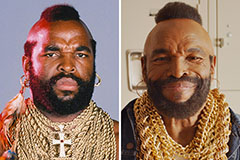Enlarged Coverage, Same Superior Quality
Noted for its commitment to excellence, MyCigarsASAP.com provides an exclusive assortment of premium cigars from leading brands in the industry. With the expansion into West Hollywood, the company continues to offer immediate availability of a wide range of luxury cigars, keeping the same stringent quality control that has gained it trust among cigar enthusiasts.
Cigar Delivery West Hollywood
CALL (800) 654-7959
Cigar aficionados in West Hollywood can select from popular brands including: • Arturo Fuente – Supplying a diverse selection of expertly produced cigars. • Montecristo – Celebrated for its velvety, equilibrated concoctions that cater to varied tastes. • Cohiba – Renowned internationally for delivering a deep, bold smoking experience. • Davidoff – A mark of luxury, featuring cigars of unsurpassed coherence and grade. • My Father's Cigars – Providing robust, rich tastes that reflect Cuban cigar methods. • Ashton – Renowned for its velvety, delicate flavor, made from the finest Dominican tobaccos. • Padron – Renowned for its bold tastes and expert craftsmanship, including the highly prized 1964 Anniversary Series. • Romeo y Julieta – A traditional favorite celebrated for its balanced flavors and dependable quality.
This wide assortment makes certain that MyCigarsASAP.com caters to a broad spectrum of preferences, with cigars sourced from esteemed regions such as Nicaragua, the Dominican Republic, and Honduras.
Emphasis on Freshness and Quality
Superiority is at the basis of MyCigarsASAP.com’s processes. To certify that each cigar is received in perfect condition, the company uses strict quality control processes, including precisely controlled storage and handpicked inventory. Every purchase is processed with attention, assuring that the cigars are dispatched fresh and tasty. Moreover, their team of cigar professionals is prepared to give personalized suggestions, providing a personalized and informative experience to every customer.
Immediate and Convenient Delivery to West Hollywood
Through this latest increase in service, MyCigarsASAP.com strengthens its role as one of the quickest premium cigar delivery services in the area. Whether for a sudden festivity, a intended function, or a relaxing evening in, clients in West Hollywood can now take advantage of speedy cigar deliveries in 30 to 60 minutes from order time. This immediate service brings a improved convenience to West Hollywood’s cigar aficionados.
Cigar Delivery West Hollywood
CALL (800) 654-7959
About MyCigarsASAP.com
MyCigarsASAP.com is a Los Angeles-located cigar delivery service determined to offer efficient, reliable access to a luxury assortment of cigars. With a commitment to quality, freshness, and personalized service, the company has earned a reputation as a trusted source for cigar lovers across the region. Now, with expanded service to West Hollywood, MyCigarsASAP.com sustains its position in delivering fine cigars speedily and precisely.
For more insight or to submit an order for prompt delivery, call (800) 654-7959.
Cigar Commencement and Chronicle: A Voyage Through Time
Cigars, often related with lavishness, heritage, and artisanry, bear a abundant past reaching centuries. The advancement of cigars reflects the fusion of traditions, discovery, and mercantile barter. This piece investigates the compelling origins and background of cigars, documenting their journey from aboriginal customs in the Americas to becoming a worldwide emblem of class.
The Old Inception: Cigars in Pre-Columbian Cultures Cigars have their primary source in the original communities of the Americas. Age-old communities, including the Mayans, Aztecs, and Taínos, are believed to have smoked rolled tobacco plants. Anthropological remains present scenes of Mayans consuming on terracotta vessels originating to no later than the 10th century. The term “cigar” probably comes from the Mayan word “sikar,” which translates to to smoke.
In these early societies, tobacco was not only a recreational product but also held holy significance. Medicine men and tribal leaders inhaled tobacco during holy customs, feeling it allowed them to connect with the divine world. Tobacco was also used curatively, offering mitigation for various conditions, such as pains and gastrointestinal issues.
Tobacco’s Arrival to Europe: Columbus and the New World The European background of cigars started with Christopher Columbus’s appearance in the Americas in 1492. His crew found native people consuming wraps of desiccated tobacco foliage, an alien practice that captivated them. Columbus and his men transported specimens back to Spain, marking the commencement of Europe’s association with tobacco.
The practice of enjoying quickly expanded across Europe. Spaniards welcomed it first, and by the 16th century, tobacco use became popular among European upper class. Early cigars were unsophisticated next to modern versions, but their appeal grew to Italy, Portugal, and France. Tobacco was also viewed as a medical wonder, thought to heal a number of conditions from colds to exhaustion.
Cuban Influence: Birthplace of the Modern Cigar Cuba’s contribution in cigar history is key, altering tobacco from a area-specific commodity into a world-spanning phenomenon. In the 17th century, Cuba became the core of cigar making due to its perfect climate and fruitful soil, particularly in the Vuelta Abajo region. Cuban cigars quickly obtained a standing for peerless quality and craftsmanship.
By the 1800s, the Cuban cigar industry was blooming, and the term “Havana cigar” turned into synonymous with excellence. Proficient artisans, known as torcedores, assembled cigars by hand, perfecting techniques that continue largely unchanged today. Many of the world’s most well-known cigar brands, such as Montecristo, Cohiba, and Romeo y Julieta, connect their genesis to this era.
The Expansion to North America and Europe The desire for cigar s escalated beyond Cuba’s borders by the 18th and 19th centuries. Tobacco plantations launched developing in other Caribbean islands, such as the Dominican Republic and Jamaica, as well as parts of Central America, including Honduras and Nicaragua. These regions endure as cigar leaders today, each adding unique characteristics to their products.
In Europe, Spain and the Netherlands became notable consumers and producers of cigars. The Dutch founded a strong cigar industry, importing Cuban tobacco and fusing it with domestic leaves to develop individual styles. Meanwhile, cigar smoking in the United States emerged as associated with status and masculinity. The rise of industrialization saw cigar factories expand across the U.S., particularly in Florida, where Cuban immigrants delivered their workmanship and traditions.
Cigars and Social Status: From Aristocracy to the Everyday Man Throughout history, cigars have been closely tied to status, wealth, and celebration. By the 19th century, cigars were a regular among European and American aristocrats. Monarchs such as King Edward VII of England were well-known cigar fans, further amplifying their popularity among the elite.
In the United States, cigars became associated to political power and business success. Industrial magnates like Andrew Carnegie and John D. Rockefeller were often read this article pictured smoking cigars, establishing their image as icons of wealth. Prominent figures such as Winston Churchill famously endorsed cigars, adding to their prestige.
However, cigars were not particular to the upper class. The growth of the cigar industry led to the making of inexpensive options, making cigars available to the working class. Cigar clubs and lounges surfaced, offering areas where people from all walks of life could savor a smoke.
The Cuban Embargo and the Rise of New Markets The Cuban cigar industry faced a major upheaval in 1962 when the U.S. government, under President John F. Kennedy, implemented a trade embargo on Cuba. Cuban cigars, previously a mainstay among American cigar fans, became illegal in the U.S., creating both rarity and intrigue around them. As a result, many Cuban cigar makers left to neighboring countries like the Dominican Republic, Nicaragua, Get More Info and Honduras, where they continued their work using Cuban-seed tobacco.
This geopolitical transformation unlocked new markets and led to the rise of premium cigars outside Cuba. Today, cigars from these regions are admired for their quality, competing with Cuban cigars in flavor, construction, and diversity.
Cigars in Popular Culture and Cinema Cigars have established their place in popular culture, often signifying power, victory, and sophistication. Hollywood adopted the cigar as an icon, featuring it prominently in films. Characters like Tony Montana in Scarface and Winston Churchill in The Darkest Hour sustain the tie between cigars and authority.
Moreover, cigars are a mainstay at celebrations, marking occasions such as weddings, business deals, and the birth of children. Cigar lounges and clubs continue to serve as congregation points for socializing and networking, bolstering their cultural relevance.
The Modern Cigar Renaissance The late 20th and early 21st centuries have recorded a revival of cigar culture. The 1990s “Cigar Boom” in the U.S. saw a reawakened interest in premium cigars, with new devotees joining the scene. Artisanry, diversity in blends, and handcrafted techniques have boosted the modern cigar renaissance.
Custom cigar brands have earned popularity, offering special blends that captivate to a burgeoning demographic of younger smokers. Additionally, the rise of cigar lounges and online cigar shops has made it simpler for consumers to investigate different varieties from around the world. Events like Cigar Aficionado’s Big Smoke further illustrate the persistent charm of cigars in contemporary culture.
Cigars and Sustainability: The Future of the Industry As the cigar industry progresses, sustainability has become a emphasis. Environmental factors, including climate change and deforestation, alter tobacco cultivation. Many cigar manufacturers are employing eco-friendly practices by using sustainable farming methods and advocating reforestation efforts.
Fair labor practices are also growing, with companies providing fair wages and safe working conditions for the farmers and artisans involved in cigar production. The priority on sustainability endeavors to preserve the industry’s legacy while meeting the expectations of socially conscious consumers.
Conclusion: A Legacy of Tradition and Craftsmanship From the venerated traditions of indigenous tribes to the plush lounges of today, cigars have journeyed a long and fabled path. Each draw of a premium cigar carries with it the legacy of generations of mastery, tradition, and cultural significance. Whether indulged in by royalty, industrial tycoons, or modern-day devotees, cigars continue to epitomize more than just tobacco—they comprise a lifestyle, a celebration, and a tie to history.
As the world of cigars develops, one thing remains constant: the fascination of taking it easy, lighting up, and appreciating the skillful combination of tradition and innovation encapsulated in each leaf.
The Cigar Creation Procedure: A Journey from Past to Contemporary Era
This Cigar Manufacturing Process: The Journey from Past to Present
Introduction
A cigar, a single timeless symbol of elegance and polish, has an rich history that bridges centuries and continents. From its early origins among native peoples to its modern incarnation as its own global industry, the process of crafting a cigar is a blend of mastery, science, and tradition. This article investigates the intricate journey of cigar manufacturing, contrasting the methods of the past with those of today, and illuminating how innovation and heritage cooperate in this compelling craft.
I. Historical Overview of Cigar Manufacturing
A. Early Origins of Cigars
The history of cigars traces back to the indigenous peoples of the Caribbean and Mesoamerica, who farmed tobacco and used it in religious and medicinal practices. When Christopher Columbus arrived in the New World in 1492, he and his crew saw the native Taíno people of Cuba and Hispaniola forming and smoking dried tobacco leaves. This practice engaged the Europeans, who imported tobacco back to the Old World, where it quickly gained popularity.
B. Traditional Cigar-Making Techniques
1. Tobacco Cultivation
In the early days, tobacco cultivation was a manual and labor-intensive process. Farmers used natural cycles and traditional knowledge to grow tobacco plants. The seeds were transplanted by hand, and the plants required meticulous care to thrive.
2. Leaf Selection and Fermentation
After harvesting, the tobacco leaves experienced a natural air-curing process. They were suspended in curing barns to dry slowly, enabling the chlorophyll to break down and the leaves to acquire their characteristic brown color. Fermentation was next, where the leaves were piled in piles called pilones. The natural heat generated by microbial activity decreased harshness and elevated the rich flavors.
3. Rolling Methods
Cigar rolling was an craft inherited through generations. Skilled artisans, known as torcedores, constructed cigars entirely by hand. They selected filler leaves, bound them with a binder leaf, and wrapped the bunch with a high-quality wrapper leaf. This meticulous process demanded precision and an eye for quality.
C. The Role of Cuban Cigar Tradition
Cuba became identical with premium cigars due to its ideal climate and soil conditions, particularly in the Vuelta Abajo region. The country's cigar-making techniques determined the standard for quality and craftsmanship. Cuban cigars were eagerly pursued, and the methods developed there determined cigar production worldwide.
II. Modern Cigar Manufacturing Process
A. Advances in Tobacco Cultivation
1. Genetic Selection
Modern agriculture has introduced genetic selection to refine tobacco plant qualities. Scientists and farmers collaborate to develop tobacco strains resistant to diseases and pests, and with desired flavor profiles. This yields more consistent and high-quality crops.
2. Modern Farming Techniques
Today, tobacco farming incorporates advanced irrigation systems, soil management, and crop rotation to maximize yield and quality. Precision agriculture technologies, such as GPS mapping and drones, enable monitor plant health and optimize resource use.
B. Leaf Processing Today
1. Fermentation Methods
While the fundamental principles of fermentation endure, modern facilities govern temperature and humidity with greater precision. This control secures uniformity and improves flavor development. Some producers implement multiple fermentation cycles to refine the tobacco further.
2. Aging and Storage
Post-fermentation aging has transformed into a critical step. Tobacco leaves are aged in controlled environments, sometimes for several years, to mellow the tobacco and boost complexity. Aging rooms are equipped with technology to preserve ideal conditions.
C. Contemporary Cigar Rolling
1. Machine-Made vs. Hand-Rolled Cigars
The 20th century brought in mechanization to cigar production. Machine-made cigars use homogenized tobacco leaf (HTL) binders and wrappers, granting mass production at lower costs. However, premium cigars remain to be hand-rolled, protecting the artisanal tradition.
2. Quality Control
Modern factories enforce strict quality control measures. This includes regular inspections, draw testing this website to guarantee proper airflow, and sensory evaluations. Technology facilitates but does not substitute the expertise of seasoned inspectors.
D. Innovations in Packaging and Distribution
Advancements in packaging materials secure cigars from environmental factors during shipping. Vacuum-sealed packaging, humidification devices, and sophisticated distribution logistics secure cigars reach consumers in optimal condition.
III. Comparing Past and Present Methods
A. Technological Advances
Technology has improved many aspects of cigar manufacturing without reducing the importance of skilled labor. Mechanization executes repetitive tasks, while artisans devote themselves on quality and craftsmanship.
B. Maintaining Tradition in a Modern Industry
Despite technological progress, the essence of cigar-making remains rooted in tradition. Many producers focus on hand-rolled methods and traditional fermentation to keep authenticity and fulfill aficionados who cherish heritage.
C. Challenges and Opportunities
The industry confronts challenges like regulatory changes, health concerns, and market fluctuations. However, opportunities appear from expanding global markets, premiumization trends, and consumer interest in artisanal products.
IV. The Art of Cigar Making: Preserving Craftsmanship
A. The Role of the Torcedor (Cigar Roller)
Torcedores are revered figures in cigar factories. Their expertise establishes the cigar's construction and performance. Training to become a master roller can take years, illustrating the complexity of the craft.
B. Apprenticeship and Skills Transfer
Many factories administer apprenticeship programs to pass skills to new generations. This secures the survival of traditional techniques and sustains high standards in production.
C. Cultural Significance
Cigar-making is more than the business; it's the cultural heritage in regions like Cuba, the Dominican Republic, and Nicaragua. Festivals, museums, and tours honor this legacy, inviting enthusiasts worldwide.
The cigar manufacturing process is an captivating blend of time-honored traditions and modern innovations. While technology has established efficiencies and consistency, the heart of cigar-making rests in the hands of skilled artisans who carry forward a legacy that covers centuries. Recognizing this journey augments the appreciation of cigars, not just as products but as embodiments of cultural heritage and craftsmanship.
 Mr. T Then & Now!
Mr. T Then & Now! Amanda Bynes Then & Now!
Amanda Bynes Then & Now! Jennifer Love Hewitt Then & Now!
Jennifer Love Hewitt Then & Now! Katie Holmes Then & Now!
Katie Holmes Then & Now! Macaulay Culkin Then & Now!
Macaulay Culkin Then & Now!